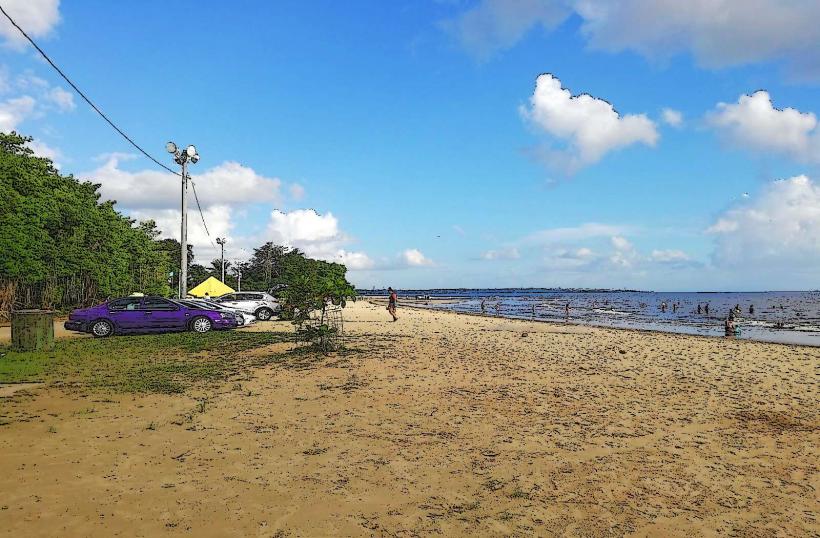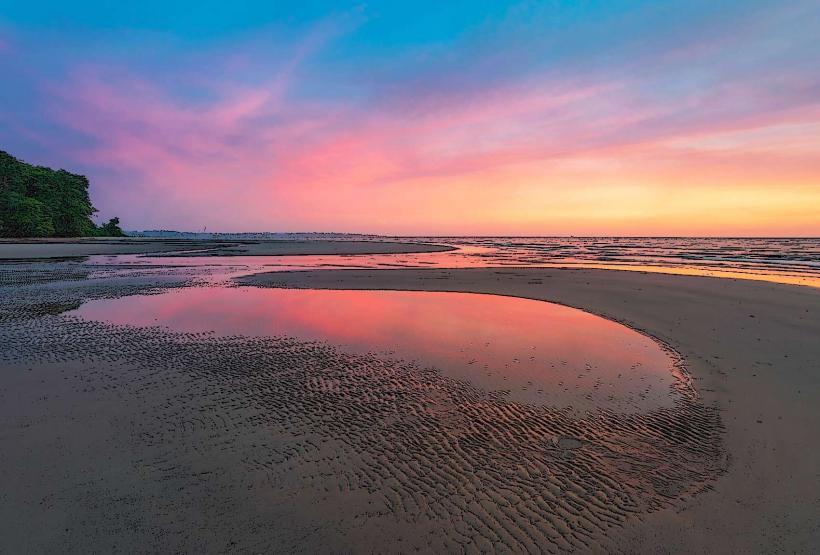Information
Landmark: Point Fortin LighthouseCity: Point Fortin
Country: Trinidad and Tobago
Continent: North America
The Point Fortin Lighthouse is a historical lighthouse located in Point Fortin, a town on the southwestern coast of Trinidad. This lighthouse has been an important navigation aid for maritime traffic in the area, helping vessels safely navigate the coastal waters. Point Fortin is known for its oil industry and its proximity to the Gulf of Paria, and the lighthouse plays a key role in guiding ships into the region.
1. Location and Accessibility
- The Point Fortin Lighthouse is situated on a cliff overlooking the sea, providing expansive views of the Gulf of Paria and the surrounding coastline.
- Located in the southwest of Trinidad, it is easily accessible from the town of Point Fortin, which is approximately 15 minutes from the coast. The lighthouse is not far from other notable locations like Guapo Beach and Icacos Beach, which makes it a good stop for those exploring the area.
- Visitors can reach the lighthouse by car and there is a small area around the lighthouse that allows for easy viewing, though the lighthouse itself is not typically open for interior tours.
2. History and Significance
- The Point Fortin Lighthouse was constructed in the 19th century and has been guiding ships along the southern coast of Trinidad for many years. Its location near the Gulf of Paria made it an important reference point for vessels navigating the waters.
- The lighthouse’s construction and purpose were integral to the development of Trinidad as a hub for maritime trade. Over the years, it has been maintained as part of the country’s maritime infrastructure.
- The lighthouse is part of a broader network of lighthouses that have historically been essential to shipping in Trinidad and Tobago, ensuring the safe passage of vessels traveling along the coast.
3. Structure and Design
- The Point Fortin Lighthouse is a tall, cylindrical structure made of masonry and painted in a distinctive pattern, typically white with a horizontal color band or other markings. The tower is designed to stand out from the surrounding landscape, making it easily visible to approaching ships.
- The top of the lighthouse features a light beacon that can be seen from miles offshore, signaling to ships the proximity of the coastline. Historically, these lighthouses used kerosene or oil lamps, but today, most have been converted to use electric lighting.
- The lighthouse may not have the same dramatic height as some of the larger lighthouses, but its strategic location allows it to perform its intended role effectively.
4. Current Use and Function
- Today, the Point Fortin Lighthouse continues to serve its original purpose of guiding ships safely along the southern coast of Trinidad. While modern technology, such as GPS and satellite navigation, has lessened the dependence on lighthouses, it remains a crucial point of reference for maritime navigation.
- The lighthouse is still operational, providing a beacon for ships entering and exiting the Gulf of Paria, particularly near the oil-producing region where tanker ships frequently pass.
5. Tourism and Attractions
- While the Point Fortin Lighthouse is not generally open to the public for interior tours, visitors can still enjoy the scenic views it offers from its location on the cliff. The surrounding area provides a great vantage point to view the coast and the waters of the Gulf of Paria.
- The lighthouse’s location also makes it an interesting stop for those exploring Point Fortin, a town known for its oil industry, as well as nearby beaches like Guapo Beach and Icacos Beach, which are relatively quiet and less tourist-heavy compared to other beaches on the island.
- The lighthouse is a popular spot for photography, especially during sunrise and sunset when the lighting is ideal for capturing stunning coastal views. Its historical significance adds to the allure, as it represents the region's maritime heritage.
6. Best Time to Visit
- The best time to visit Point Fortin Lighthouse is during the dry season (from January to May), when the weather is typically sunny and clear, making it ideal for outdoor activities and photography.
- However, the lighthouse can be visited throughout the year, although during the rainy season (June to December), the region may experience occasional showers. Still, this is a great time to visit if you prefer quieter conditions without many tourists.
7. Nearby Attractions
- Guapo Beach: A tranquil beach that’s a short drive from the lighthouse, Guapo Beach offers golden sands, calm waters, and a more secluded experience compared to other popular beaches in Trinidad.
- Icacos Beach: Located further south, Icacos Beach is a beautiful and relatively unspoiled beach that attracts visitors looking for natural coastal beauty.
- La Brea Pitch Lake: About 20 minutes away from Point Fortin, La Brea Pitch Lake is one of the world’s largest natural asphalt lakes. It offers an opportunity to learn about the unique geological formation and its significance to the island’s oil industry.
- Los Iros Beach: A nearby, lesser-known beach that offers a peaceful experience with fewer crowds and beautiful coastal views.
8. Conclusion
The Point Fortin Lighthouse is an important historical landmark on Trinidad’s southwestern coast. With its historical role in maritime navigation, scenic views, and proximity to beautiful beaches and natural attractions, it offers visitors a chance to connect with the island’s maritime heritage while enjoying the tranquility of the surrounding area. Though not a major tourist site with extensive facilities, the lighthouse remains a hidden gem for those exploring the less commercialized side of Trinidad. It is an ideal spot for history enthusiasts, photographers, and nature lovers alike.





